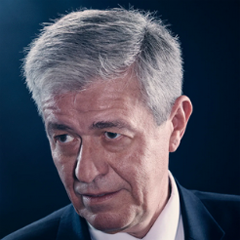You are not currently logged in. Please create an account or log in to view the full course.
State of the Art
- About
- Transcript
- Cite
Brain Imaging
In this course, Professor Karl Friston (University College London) discusses brain imaging. Brain imaging is a field that revolutionised neuroscience, since it is extremely powerful at detecting various functionalities of the brain, and especially when those functionalities go wrong. We begin by: (i) introducing the state of the art of brain imaging, understanding the different measurements we can make that correlate to brain activity; followed by (ii) looking at how we can use brain imaging to diagnose disease and psychiatric conditions; and then (iii) looking at how there are limitations to the current tools we have at our disposal for brain imaging; before finally (iv) looking at the influence that brain imaging has had on other fields in the physical sciences and philosophy.
State of the Art
In the first mini-lecture, we learn about the state of the art of brain imaging. We learn about two main measurements we can make about the brain: (i) the hemodynamic response, which analyses the changes in blood flow around the brain; and (ii) the electromagnetic fluctuations across the brain representing nervous impulses. We then introduce the terms functional integration and segregation, principles of brain function which can be observed by these methods. To finish off, we present the theories of hierarchical structure within the brain.
Cite this Lecture
APA style
Friston, K. (2022, August 30). Brain Imaging - State of the Art [Video]. MASSOLIT. https://massolit.io/courses/brain-imaging/beyond-brain-imaging
MLA style
Friston, K. "Brain Imaging – State of the Art." MASSOLIT, uploaded by MASSOLIT, 30 Aug 2022, https://massolit.io/courses/brain-imaging/beyond-brain-imaging
Lecturer

